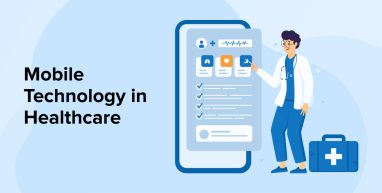
Recent technological advancements are revolutionizing the healthcare industry, leading to enhanced caregiver efficiency and better patient outcomes. The COVID-19 pandemic also had two impacts: the first was to make patients take proactive care of their health, and the second was to boost remote or virtual care services. Increased smartphone use acted as a catalyst in both.
Patients using mHealth or mobile health solutions isn’t just a fleeting trend but a new norm beneficial to both patients as well as medical services providers. You can always count on an expert healthcare software development company to leverage the latest technologies to build and deliver mobile healthcare solutions.
This blog takes a deep dive into the subject, exploring the advantages, challenges, types, and trends of mobile healthcare.
1. Overview of Mobile Technology in Healthcare (mHealth)
When you hear the term “mobile health you might immediately think of the intersection between healthcare and mobile technology. In simple words, if we can describe mobile health or mHealth, then it is the use of mobile devices, i.e., smartphones, wearable devices, tablets, and other wireless technologies in medical practices. According to the World Health Organization (WHO), mobile health means medical and public health practices supported by mobile devices. It not only serves patient needs but also supports healthcare providers.
1.1 Advantages of Mobile Technology in Healthcare
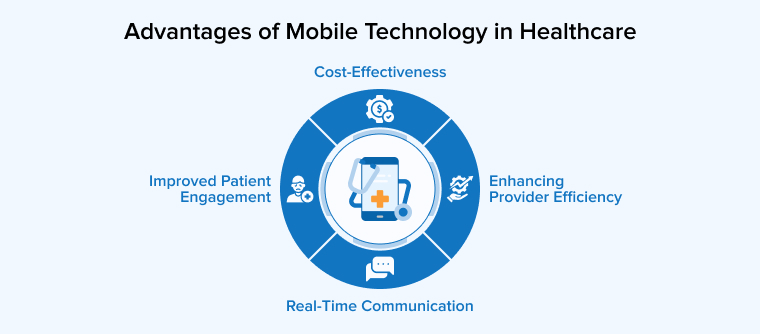
Let us uncover the most distinguished benefits below:
1. Cost-Effectiveness
Money is one of the most important factors in healthcare because the costs of medicines and patient treatments are rising continuously, leading to out-of-pocket expenditures. Therefore, any development in the healthcare industry must focus on optimizing the cost factor.
Implementing mobile health technologies can prove cost-effective in different ways:
- Electronic health records (EHRs) reduce the requirement of physically storing and updating patient medical records. Healthcare professionals can access them whenever and wherever they want.
- Telemedicine provides the flexibility for doctor consultation from home in case of not-so-serious health issues and follow-ups. Patients can avoid in-person visits, enabling healthcare professionals to focus on more serious cases. As a result, telemedicine saves both time and money.
- Automating daily operations and workflow management helps reduce labor costs.
- Mobile apps foster preventive care in different ways. Health apps and wearable devices track fitness activities daily and monitor multiple health-related parameters. Through timely detection and diagnosis, healthcare providers can avoid major medical complications in the future. Timely treatment saves much of the expenses incurred.
- Mobile apps educate people regarding self-care and disease management, reducing the treatment costs for minor issues.
2. Improved Patient Engagement
Mobile health applications and wearables enforce greater involvement of individuals in their healthcare. People can monitor their glucose levels, blood pressure, heartbeat rate, daily footsteps, sleep hours, etc. This increases self-awareness regarding their own health. Patients can anytime refer to their ongoing or previous medications or treatments through electronic medical records. It brings healthy changes in lifestyle habits and helps manage acute and chronic medical conditions.
The fitness goals offered by the mobile applications motivate the person to achieve them, increasing personal satisfaction and further encouraging them to follow a healthy lifestyle.
3. Enhancing Provider Efficiency
Automating administrative tasks streamlines workflow management, ensures easy availability of patient records, and eliminates the possibility of manual errors. As a result, the productivity and work efficiency of healthcare providers increase significantly.
Doctors can focus on the actual areas of healthcare improvement, enhancing the delivery of high-quality patient care.
Telemedicine serves as a great medium for timely medical intervention virtually. Neither healthcare professionals nor patients are required to travel in case of non-physical emergencies. Removing the barrier of physical separation improves the accessibility and patient experience many times.
4. Real-Time Communication
Have you ever experienced a situation where you’ve had to wait for treatment till the concerned specialists arrive from a different place? Did you have to travel to a different place for even follow-ups due to the unavailability of the concerned doctors in your area? People living in small towns and cities often encounter such situations. This causes a lot of inconvenience.
mHealth resolves these issues by facilitating real-time communication and collaboration among healthcare professionals through video conferencing and secure messaging apps. These tools enable information exchange and timely treatment by connecting doctors, nurses, and other healthcare providers from across the globe. In complex and emergency conditions, a distant medical team can use a webcam to guide patients through the treatment procedure or monitor their health until first responders arrive. Patients can avail themselves of expert guidance by sharing the reports and data with distant specialists by just sitting at home. This promotes remote consultation and the best timely healthcare delivery.
2. Trends in Mobile Technology for Healthcare
Let us now look at the recent technological trends in mobile healthcare technology that are rapidly gaining traction.
2.1 Internet of Medical Things (IoMT)
The Internet of Medical Things (IoMT) has become a buzzword in today’s technological world. IoMT is a technology that connects medical devices, mHealth applications, sensors, wearables, and IT systems. These IoMT devices can track patient vitals and provide healthcare professionals with real-time, precise data that helps in delivering personalized treatment and care. The reliance on hospital visits and annual checkups can be significantly reduced by knowing the basic health vitals, such as pulse rate and blood pressure.
Healthcare organizations can save billions by providing remote care through IoMT. It enables 24/7 patient monitoring for terminally and chronically ill patients, increasing the treatment quality and removing any possibility of discrepancy. The correct data regarding inventories, drugs, and devices also helps to improve supply chain efficiency and resource management.
2.2 Artificial Intelligence (AI)
Healthcare mobile technology integration with AI can do wonders. Chatbots have become a common thing we notice on almost every application and website. Healthcare systems are adopting smart chatbots to resolve multiple health-related queries and even schedule appointments according to the available slots.
AI can analyze vast amounts of clinical data, lab results, and data generated from mHealth apps to determine useful patterns, detect anomalies, and predict results and trends without compromising accuracy and precision. This helps with the accurate interpretation of medical images and reports, leading to a better diagnosis and personalized treatment. The data analysis techniques use advanced algorithms to forecast potential health risks and suggest preventive measures. Life-threatening conditions such as tumors, cancer, clots, etc., require highly sophisticated insights that AI can provide.
2.3 Remote Patient Monitoring
After the COVID-19 pandemic, there has been a rise in virtual healthcare. Mobile health apps serve as a great medium to connect doctors with patients anytime and anywhere. Getting medical advice related to medicines and symptoms without visiting the doctor has become quite easy. You can show him your previous test reports from the app’s storage to make it easier for the healthcare professional to make a data-driven decision. It may save you from critical health conditions that would otherwise occur if proper attention is not given to the symptoms.
Get a glimpse of the working of the remote patient monitoring unit from the given figure:

2.4 Voice Technology
Isn’t it easy to surf the internet using voice commands rather than typing, especially when you aren’t physically well and need to search for something important? Most people would agree. Voice technology can be incredibly convenient, you can book appointments, access your medical history, set reminders, take conversational therapy in psychological treatments, etc., using your voice requests. In hospitalization cases, patients can avail of the required services instead of physically requesting healthcare staff.
If a patient is physically disabled and faces problems using their hands for navigation, voice mobile technology is the best solution. They can use healthcare apps conveniently. Not only patients but even healthcare providers can use voice assistants to dictate clinical notes, update EHRs, write prescriptions, fetch reports from EHRs, and display them on screens in procedure rooms, etc.
2.5 Telemedicine
Telemedicine is a blend of telecommunication and information technologies developed to provide healthcare services by overcoming physical distance constraints. It especially benefits rural communities, people staying in suburban and small towns, disabled persons, etc. It promotes a store-and-forward process, allowing patients to send their medical reports, as MRIs, blood tests, and scans, or audio/video messages, to the respective doctors even when they are not available at the same time. The doctors can check those reports offline and revert with the required actions. This method is very helpful in lighthearted cases.
Getting medical advice related to medicines and symptoms without visiting the doctor has become quite easy. Telemedicine facilitates phone conversations, video calls, and home visits to access healthcare services at an effective price from anywhere. Let’s see on Twitter what others are discussing about the Telemedicine market for healthcare.
The Telemedicine market is booming! GVR predicts the market will reach USD 380.33 billion by 2030! Explore the key trends shaping the future of the telemedicine market @ https://t.co/E8aKSlMr7X
— Healthcare | GVR (@gvr_healthcare) February 14, 2025
Subscribe to our newsletter @ https://t.co/Sq9YbHOWde#GVR #ehealth #Telemedicine pic.twitter.com/Brg61Xkwpn
3. Challenges of Using Mobile Technology in Healthcare
Mobile technologies have significantly benefited the healthcare system and have proved to be a boon for the healthcare industry. Implementing mobile technologies in the healthcare industry has proved to be a boon, bringing a long array of benefits to both patients and medical service providers. However, it has some associated risks. It’s important to comprehend and manage them to take complete advantage of mHealth.
Below are the top risks of mHealth development:
3.1 Ensuring Data Privacy and Security
Healthcare mobile apps store and transmit large amounts of sensitive medical information of countless patients daily. The diverse data collection and transfer for different purposes raises security concerns. The loss of a single record can have tremendous implications. The course of treatment might be affected, which can be life-threatening or cause high psychological distress.
Privacy is a major concern when it comes to personal information. Unauthorized access can lead to data leakage. If data goes into the wrong hands, it can be manipulated and used for fraudulent activities. There is a societal stigma attached to some medical issues, for example, mental health conditions, data disclosure, and loss can become a major reason for increased social pressure and further deterioration of mental health. If proper security control measures are not implemented in the app, there is are high chance of cyber-attacks and ultimately data breaches. The reputation of even healthcare providers is at stake in such cases.
3.2 Difficulty for Users
Technology becomes hands-on if it is easy to use, i.e., simple and user-friendly interface, device compatibility, consumes low bandwidth, easy to comprehend the features and functionalities, etc. However, consider a situation where an mHealth app cannot integrate with wearable devices. Will you enjoy using the app if it’s running slowly and taking up too much of your device storage? What about the people staying in rural, high-altitude, and underdeveloped regions where the internet is unstable? Will they be able to utilize such apps to the fullest? All such situations will cause frustration for both healthcare providers and patients.
There is still a significant digital divide among different categories of people, preventing patient access to such useful inventions.
4. Final Words
Mobile technology is revolutionizing the healthcare industry by redefining the way medical services are offered across the world. Adapting advanced technologies such as AI, ML, and wearable apps has taken mHealth to another level, empowering both healthcare providers and patients in the process.
As technology continues evolving, countless opportunities arise to improve patient outcomes. Having said that, there are some limitations and challenges as well. But adhering to proper protocols and best practices would help overcome all the barriers that come in the way of delivering cost-effective, convenient, easily accessible, and enhanced healthcare services.
FAQS
What is mobile healthcare technology?
Mobile healthcare technology involves the use of mobile devices for patient care delivery and clinical support to improve health outcomes.
What is a mobile application in healthcare?
Healthcare applications are mobile apps built to provide patient care services in a more accessible and flexible manner.


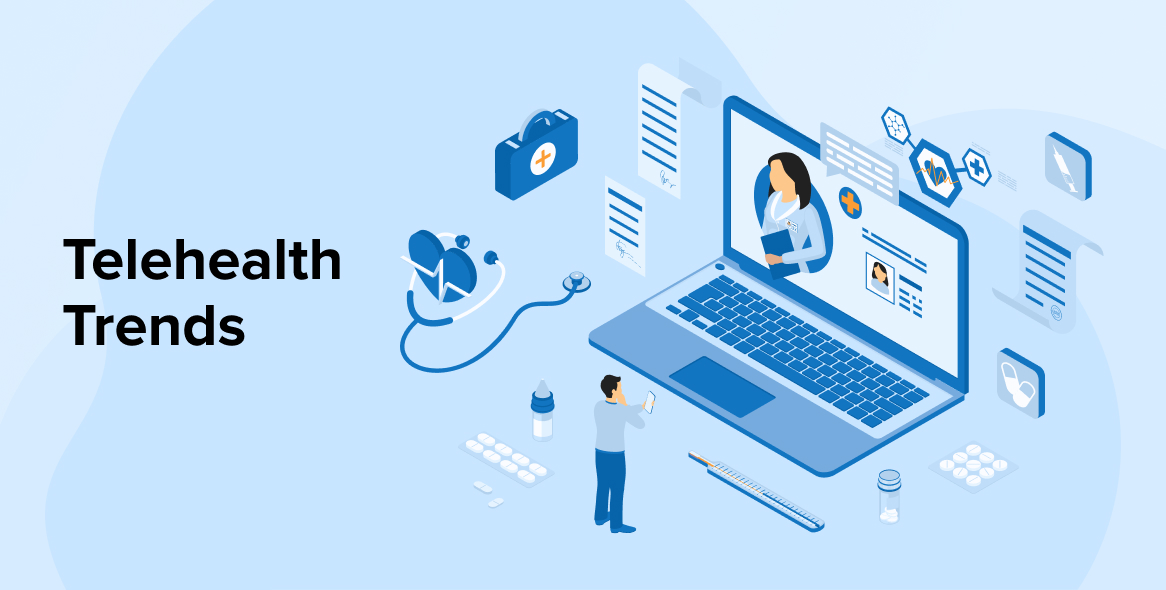
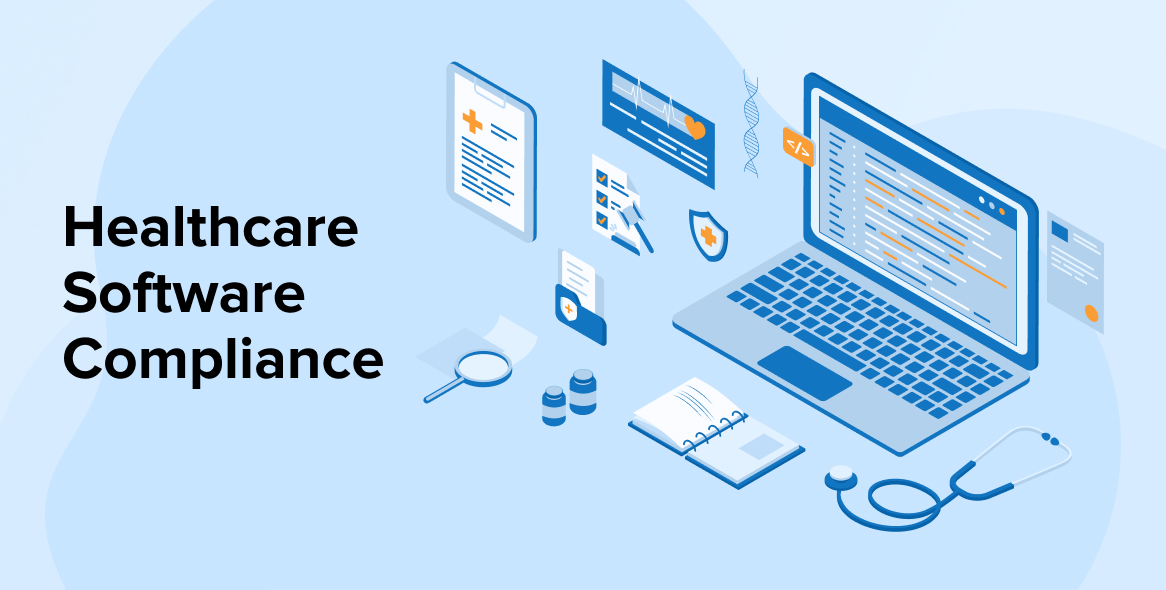
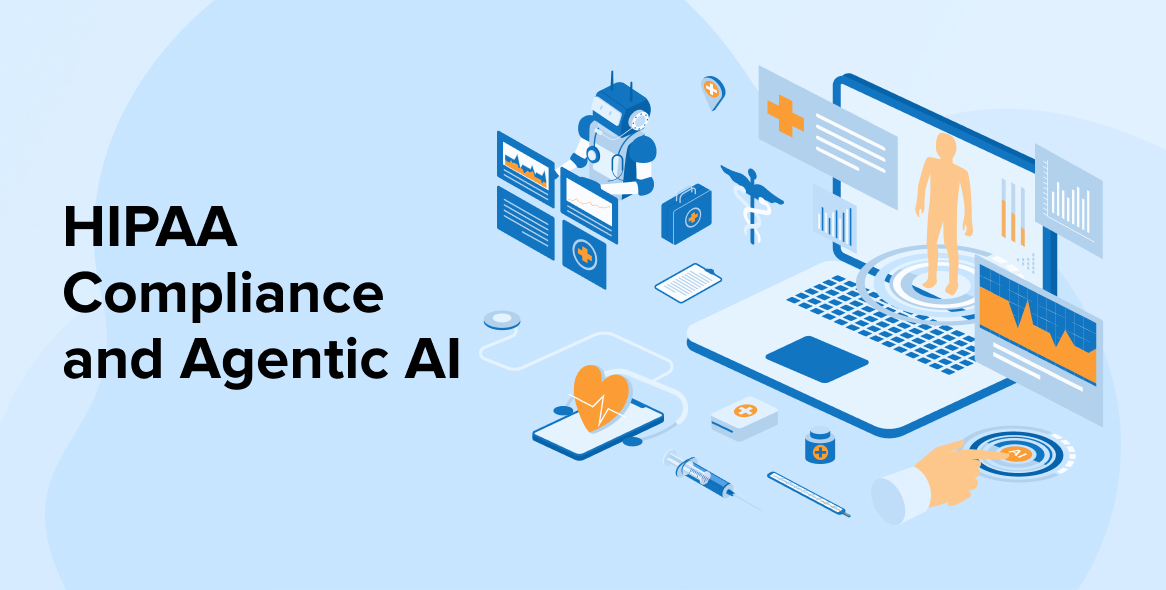

As someone who works in the healthcare industry, I found this blog to be informative and insightful on the role of mobile technology in healthcare. The blog covers important aspects such as patient engagement, telemedicine, and mobile apps, making it a valuable read for anyone.
As a healthcare professional, This article helps me a lot because it describes All the preliminary advantages of health apps that have played great roles in the healthcare sector and increased overall health care professionals productivity. Thanks for sharing!
The benefits of using mobile technology in healthcare are well explained in this article. After reading this article, I can say that mobile technology has the potential to revolutionise the healthcare industry. Thanks for sharing!
The article mentions that mobile healthcare applications can help with chronic disease management. This is a very important area, as chronic diseases are a major burden on the healthcare system today. Mobile health apps can help patients track their symptoms, medication adherence, and other important health information. This can lead to better disease management and improved patient outcomes. Thanks for sharing.
This is an article about the benefits of mobile technology in healthcare. Some important points from this article are that mobile technology can make healthcare more accessible and affordable, and it can also help patients take control of their own health. highly recommend!
This Blog highlights how mobile apps can empower patients, enhance communication between patients and providers, and promote medication adherence. Also mobile technology can contribute to cost reductions and streamlined administration in healthcare. Thanks for providing this valuable information.
The article outlines several initial benefits of mobile healthcare applications that have significantly impacted the healthcare industry. After reading the content all I can say is that embracing mobile health technology will unquestionably benefit medical company’s revenue and credibility.